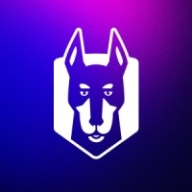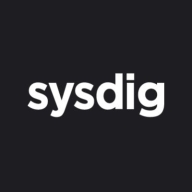

Sysdig Secure and Snyk compete in the security space, focusing on container and runtime protection, and open-source security and code analysis, respectively. Sysdig Secure leads in container visibility and runtime protection, while Snyk shines in code vulnerability scanning and CI/CD integrations.
Features: Sysdig Secure enhances container security through runtime protection, threat detection, and container visibility. It efficiently monitors container activity and provides security intelligence. Snyk's strengths lie in its deep code analysis, vulnerability identification, and integration with numerous development tools.
Room for Improvement: Sysdig Secure could enhance its user interface for simplified configuration processes and expand into broader security insights beyond containers. Improvement in scalability for varied user demands and cost optimization in cloud integrations can be beneficial. Snyk might benefit from expanding its vulnerability database to enhance scope and accuracy, improving reporting features for detailed insights, and enhancing support for niche programming languages requiring comprehensive coverage.
Ease of Deployment and Customer Service: Sysdig Secure excels with robust documentation and seamless integration with Kubernetes, creating an operations-focused deployment. Its customer service is comprehensive. Snyk offers an easy and quick setup for developers, with clear pathways for integration in popular development environments. Its simplified onboarding process and targeted support make it appealing for developer-centric teams.
Pricing and ROI: Sysdig Secure's pricing reflects a focus on large-scale operations, suggesting higher initial investments but valuable returns in long-term operational security. Snyk offers a more budget-friendly entry for small to medium enterprises, with lower setup costs and substantial value in code vulnerability scanning, delivering a cost-effective solution for development teams focusing on code security.
| Product | Market Share (%) |
|---|---|
| Snyk | 5.3% |
| Sysdig Secure | 2.7% |
| Other | 92.0% |


| Company Size | Count |
|---|---|
| Small Business | 20 |
| Midsize Enterprise | 9 |
| Large Enterprise | 21 |
| Company Size | Count |
|---|---|
| Small Business | 5 |
| Midsize Enterprise | 2 |
| Large Enterprise | 3 |
Snyk excels in integrating security within the development lifecycle, providing teams with an AI Trust Platform that combines speed with security efficiency, ensuring robust AI application development.
Snyk empowers developers with AI-ready engines offering broad coverage, accuracy, and speed essential for modern development. With AI-powered visibility and security, Snyk allows proactive threat prevention and swift threat remediation. The platform supports shifts toward LLM engineering and AI code analysis, enhancing security and development productivity. Snyk collaborates with GenAI coding assistants for improved productivity and AI application threat management. Platform extensibility supports evolving standards with API access and native integrations, ensuring comprehensive and seamless security embedding in development tools.
What are Snyk's standout features?Industries leverage Snyk for security in CI/CD pipelines by automating checks for dependency vulnerabilities and managing open-source licenses. Its Docker and Kubernetes scanning capabilities enhance container security, supporting a proactive security approach. Integrations with platforms like GitHub and Azure DevOps optimize implementation across diverse software environments.
In the cloud, every second counts. Attacks move at warp speed, and security teams must protect the business without slowing it down. Sysdig stops cloud attacks in real time, instantly detecting changes in risk with runtime insights, a unique AI architecture, and open source Falco. Sysdig delivers live visibility by correlating signals across cloud workloads, identities, and services to uncover hidden attack paths. By knowing what is running, teams can prioritize the vulnerabilities, misconfigurations, permissions, and threats that matter most. From prevention to defense, Sysdig helps enterprises move faster and focus on what matters: innovation.
Sysdig. Secure Every Second.
We monitor all Container Security reviews to prevent fraudulent reviews and keep review quality high. We do not post reviews by company employees or direct competitors. We validate each review for authenticity via cross-reference with LinkedIn, and personal follow-up with the reviewer when necessary.